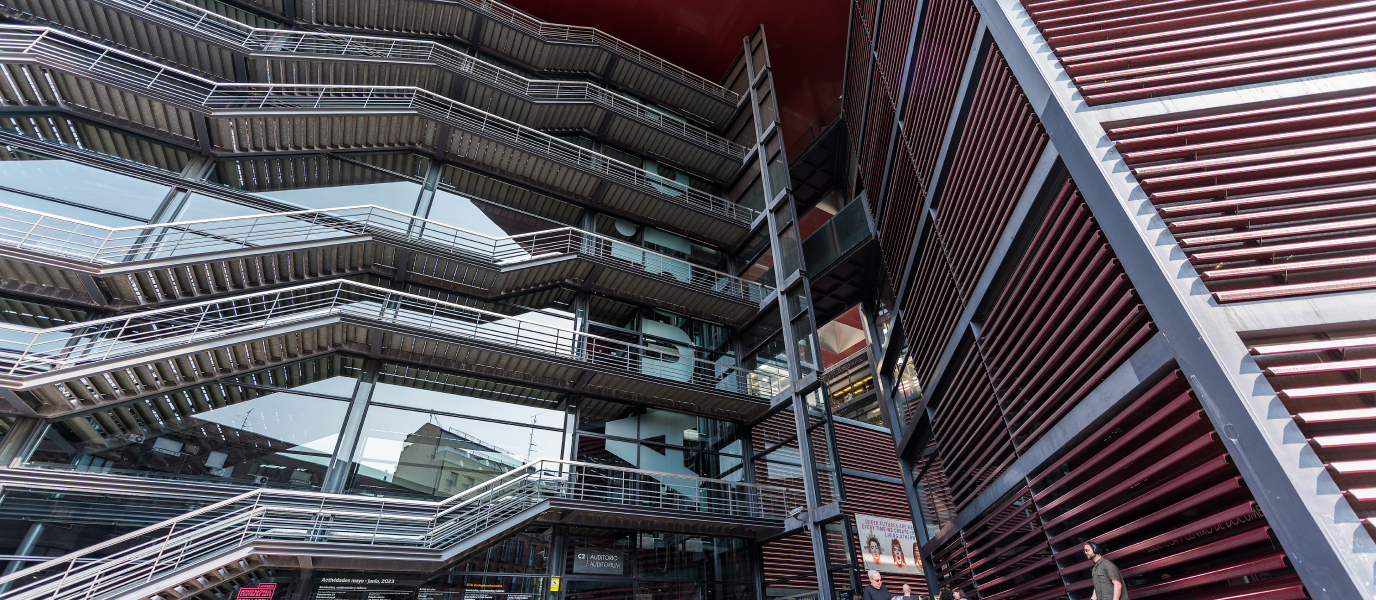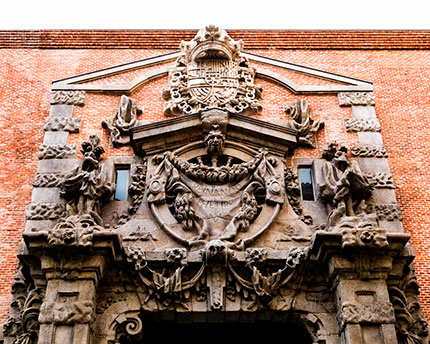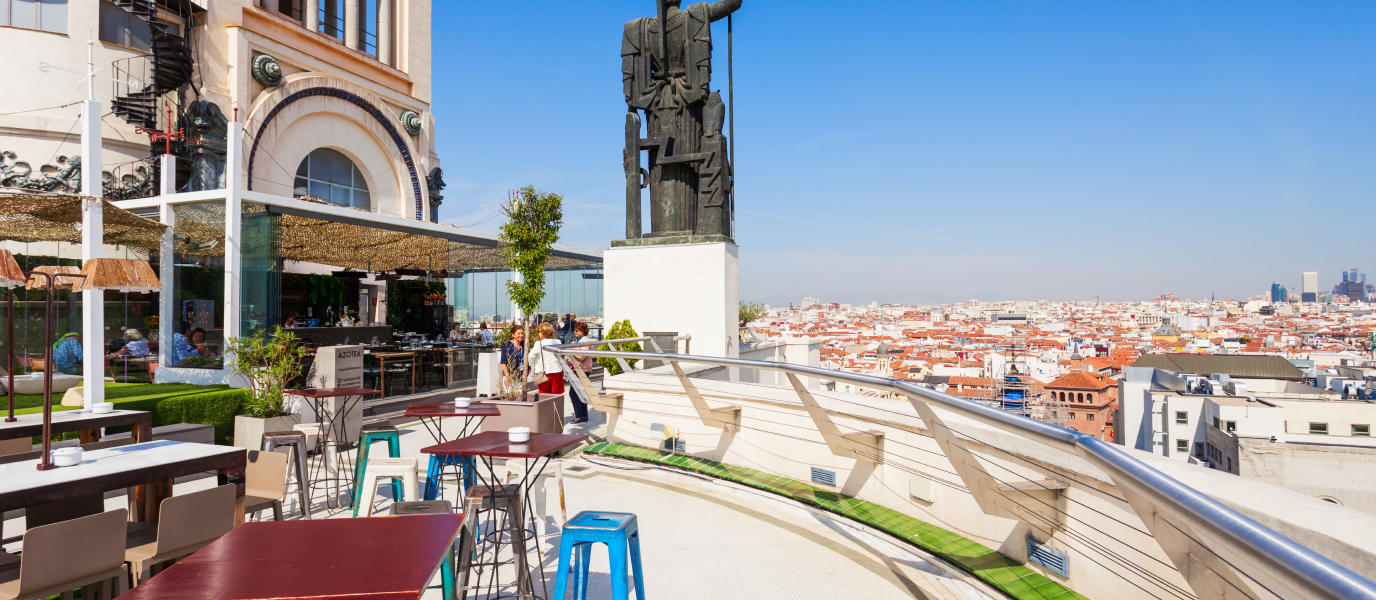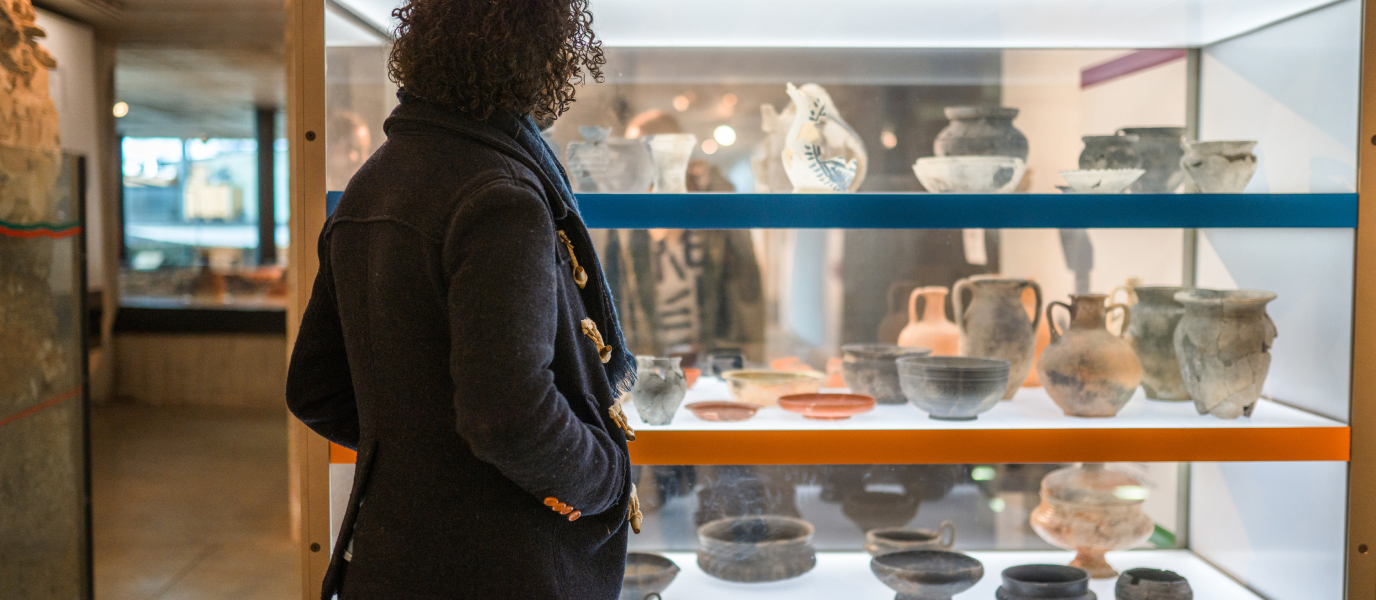The Museo Nacional Centro de Arte Reina Sofía [Reina Sofía National Art Museum] is one of the institutions which, along with the Museo Nacional del Prado and the Museo Nacional Thyssen Bornemisza, make up Madrid’s Art Triangle. It is an essential visit for art lovers visiting the capital city as, in addition to housing Pablo Picasso’s Guernica, it exhibits a wide selection of works by modern artists such as Dalí, Miró and Juan Gris.
The three tours recommended by the museum are: ‘The arrival of the twentieth century: utopias and conflicts (1900-1945); ‘Has the war ended? Art in a divided world (1945-1968)’; and ‘From upheaval to Postmodernism (1962-1982)’. Those with limited available time may opt instead for the museum’s selection of what it considers the 80 most essential works (the list can be found on its website).
We recommend that you begin with the jewel in the museum’s crown: El Guernica, a vast mural depicting the suffering of the victims of the bombing of the Basque city of Guernica on 27 April 1937. This work was brought by the Republican government from the 1937 Paris International Exhibition, and displayed in the Casón del Buen Retiro until the establishment of the Museo Reino Sofía.
Related experiences
From hospital to museum
The passage of time has been kind to the former General Hospital of Madrid, which in 1986 became the modern Museo Reino Sofía. The building’s origins date back to the sixteenth century—it was the centre where Philip II had the idea of bringing hospitals (which were spread throughout the capital) together under one roof, an idea which Charles III brought to fruition as a single new hospital. Now it has a much more up-to-date image. Visitors no longer come here seeking a cure for illnesses; instead they pursue the one single pleasure of admiring the museum’s permanent collection and its important temporary exhibitions.
The edifice that houses the Museo Reino Sofía represents a synthesis of its history, development and character. This imparts an added value to the cultural centre which is an essential part of any trip to Madrid. To find out more about its history, we need to step back in time to the eighteenth century, when the engineer José Hermosilla initiated its construction and the architect Francisco de Sabatini completed it.
The first milestone in its history was reached in 1805 when it opened its doors as a general hospital. It functioned as a hospital for over a century until, in 1969, its responsibilities were taken over by the Ciudad Sanitaria Provincial [City Health Authority] and it was then shut down. The authorities even began to consider demolishing the building but, fortunately, they saw fit to declare it a Historical-Artistic monument in 1977, at which point its survival was guaranteed.
The second turning point for the Museo Reino Sofía came in 1986 when, following the remodelling of the premises, it began to function as an art museum. From that time onwards, art lovers could enjoy the ground and first floors of the former hospital as temporary exhibition rooms. Two years later, the three towers housing iron and glass lifts were installed, features which are a real symbol of the art gallery’s identity.
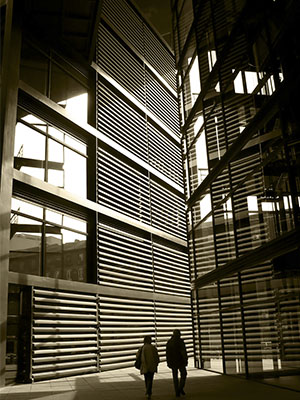
What was initially known as the Centro de Arte Reina Sofía became a National Museum by Royal Decree in 1988. It took over the resources of the former Museo Español de Arte Contemporáneo [Spanish Museum of Contemporary Art], and from 1992 onwards began, in addition to temporary exhibitions, a permanent collection which it was charged with expanding.
The Jean Nouvel extension
The third milestone was reached when the need arose to expand the space available to house collections and to provide services to visitors. A public competition was organised which was won by the innovative proposal from the AJN (Architectures Jean Nouvel) team. The French architect planned a remodelling of the space, integrating both the original museum building and the public urban setting around it. The extension increased the available space by 60%, bringing the building’s total area to 84,048 m2 and making it one of the largest museums in the world. This ambitious project was completed in September 2005, and included two auditoriums, a library and resource centre, storerooms for works of art, offices, meeting rooms, a VIP room, a bookshop and a restaurant-café.
The museum’s own resources and permanent exhibitions
The Museo Nacional Centro de Arte Reina Sofía was established with the aim of showcasing Spanish contemporary art within an international context. To start it on this journey, its resources originally came from the former Museo Español de Arte Contemporáneo (which is no longer in existence), and from twentieth-century works which had been held at the Museo del Prado. The Museo del Prado housed a splendid collection of works by Pablo Picasso relating to El Guernica.
The almost 23,000 works held by the museum range from the late nineteenth century right up to the modern age. They represent an extremely varied range of artistic techniques, as there are 6,000 works of graphic art, 4,400 photographs, 4,000 paintings, 1,600 sculptures, 3,600 drawings, around 450 cinema and video items, over 100 decorative pieces, 140 installations, 70 video installations and 47 architectural exhibits. Out of such a vast collection, approximately 5% has been selected for display in its exhibition rooms.
The many tens of artists whose works are exhibited here include Pablo Picasso, Joan Miró, Salvador Dalí, Juan Gris, Francis Bacon and René Magritte. Over the museum’s area of almost 9,000 m2, you can see over 1,000 works held between the Sabatini and the Nouvel buildings. The collection is not organised on a linear basis, as the rationale is not to group together works by a particular artist, but to show how the works relate to one another by means of a narrative thread placing them within their historical context. For this reason therefore, artistic works can be exhibited alongside documentary resources such as films or photographs, which contextualise the work and provide a broader artistic perspective. As the years have passed, the way the works are displayed has moved from a linear model to one focused on cross-cutting themes.
Temporary exhibitions at the Reina Sofía
As we have seen, the museum’s permanent exhibitions are governed by criteria based on their contemporary, historical and artistic context. Similar methods and processes apply to the temporary exhibitions, albeit with a greater degree of flexibility. Thematic and retrospective exhibitions, as well as studies by the museum’s own research department, are all in evidence. Collaboration with other Spanish art institutions and the creation of new works are other methods used by the museum to ensure that it remains permanently at the forefront of new artistic trends.
It is worth remembering that, apart from the temporary exhibitions, you can also enjoy more cutting-edge displays in unique settings such as the Palacio de Velázquez and the Palacio de Cristal, both located in the Retiro Park.
Visiting the Museum with children
The development of educational programmes is another of the Museo Reino Sofía’s priorities. To achieve this, it has an Education Department that organises activities, workshops, family tours, film and video screenings, and even concerts. As demand for the workshops is extremely high, we recommend that you book in advance for any that interest you. We also recommend that you download one of the guides for families which you can find in pdf format on the museum’s website.
Other areas of interest
Apart from its exhibition rooms, the Museo Reino Sofía has other areas of interest including:
- An auditorium, a VIP room and terraces. The Nouvel building houses two auditoriums, one with seating for 400 people, while the other holds 200. The building also has a conference hall, a VIP room and 630 m2 of half-covered terraces which afford fine views of the capital’s rooftops.
- La Central, the museum’s bookshop. The bookshop specialises in the Humanities, and stocks over 65,000 titles including domestic and international publications.
- The shops. Items based on the Reina Sofía’s collections, exhibitions and activities, and produced especially for the museum. There are two shops: one in the Sabatini Building and the other in the Nouvel Building.
- The Museo Reina Sofía Arzábal restaurant. This is located in the Sabatini Building, and describes itself as a neighbourhood tavern, although it offers a very thoughtful cuisine. Its garden terrace is the ideal place to spend a warm summer evening.
- NuBel Snack-bar and Restaurant. A modern eatery beneath a huge, red cupola designed by Jean Nouvel. The cuisine is presided over by the chef Javier Muñoz-Calero.




































































